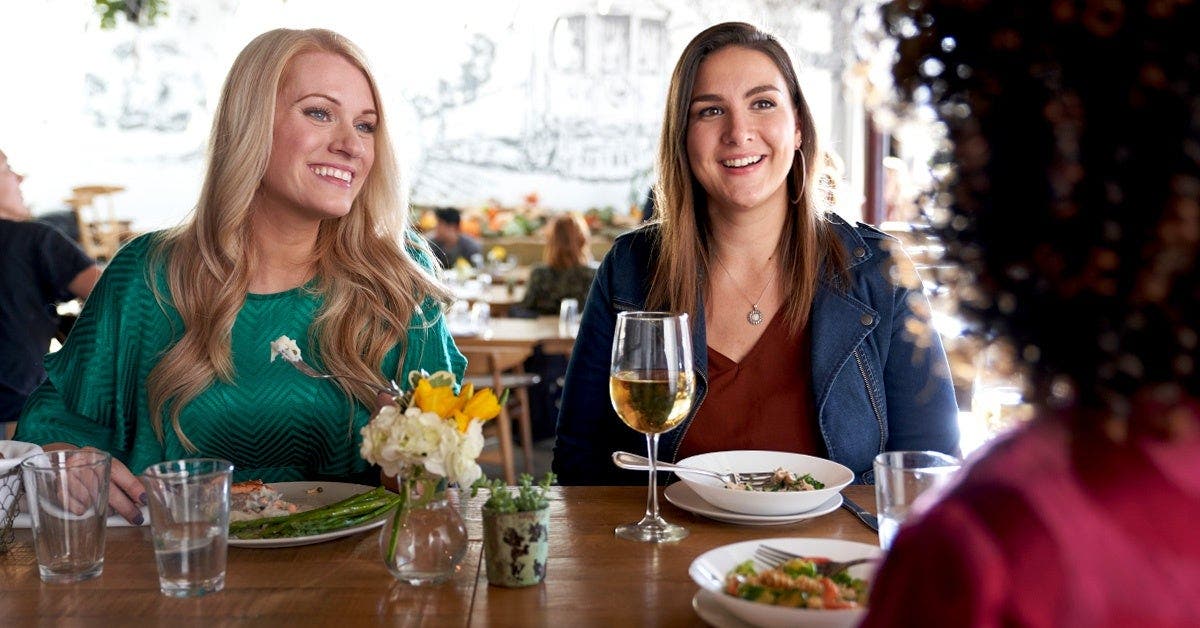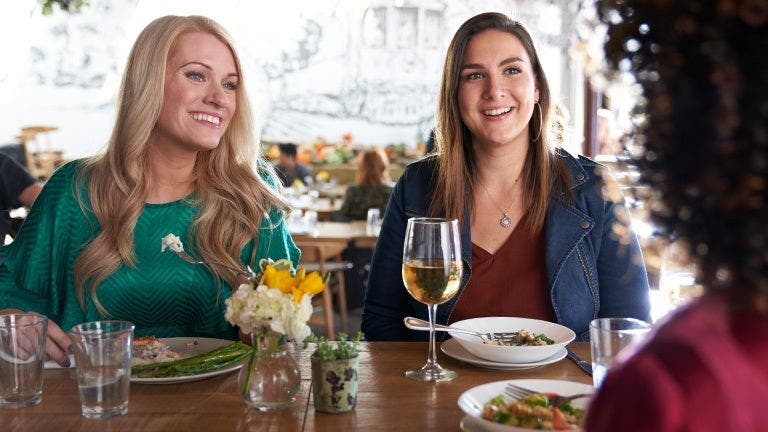Members’ top myWW+ Purple questions answered


What can I eat on myWW+ Purple?
Anything—as long as it fits into your SmartPoints® Budget. Purple offers you a personalized SmartPoints Budget and 300+ ZeroPoint foods that you don’t have to measure or count including plenty of fresh fruits and veggies, plus chicken and turkey breast, eggs, beans, whole grains, potatoes, and more.
RELATED: 5 days of sample meals
How do I know if I'm doing well on Purple?
Well, there are a few ways:
- Are you always hungry? A whole new way of eating can take some time to get used to but if you're constantly starving, that's a sign that another colour might work better for you.
- Are you staying in the Healthy Eating Zone? If you're concerned because you have extra SmartPoints left over at the end of the day, that's totally okay. One of the ways myWW+ encourages healthy and balanced eating in the real world is through the Healthy Eating Zone, which is your daily SmartPoints Budget plus a little wiggle room. (Proof that you don’t have to be “perfect” to be on track for the day.) As long as you're in the Zone, you're in the zone!
- Are you losing weight? All of the colours are designed to help you lose 1-2 lbs per week, on average. (You might lose a little more at first.)
Can I switch colours if I want to?
Absolutely! You can switch at any time. Keep in mind that it can take a little while to adjust to a change in your eating habits and to understand whether it fits your lifestyle.
Not sure which one to choose?
- Would you rather have more SmartPoints to spend? Would you be happy limiting your ZeroPoint foods to fruits and vegetables (not including corn, peas, beans, or other starchy veggies)? Switching to Green might work well for you.
- Were you seeing success on our previous program, WW Freestyle? Blue is the way to go. (It’s Freestyle, just with a new name!)
If you decide that switching is what’s best for you, you can do it anytime in the WW app.
How do I know what portion size to eat?
Figuring out portion sizes plays a big part in reaching your weight-loss goals. The right amount for you depends on what you’re eating and how much you need to feel satisfied while staying within your SmartPoints Budget. The best way to learn that amount is to do some measuring. Over time, you’ll train your brain to serve up the right amount automatically.
RELATED: Tips for weighing and measuring portions
What are weekly SmartPoints?
If you’re new to WW, Weeklies are part of your SmartPoints Budget:
Daily SmartPoints
+
Weekly SmartPoints
=
Your SmartPoints Budget
Everyone gets them, whether you’re on Green, Blue, or Purple. You start each week with a set amount of weekly SmartPoints that you can use any way you like—split them up and use a few each day or save 'em for the weekend.
Don’t be afraid to use your weekly SmartPoints. We’ve calculated them into your overall Budget and our research shows that using them won’t stall your weight loss. In fact, they’re a great way to keep things flexible and livable.
What are rollovers?
Rollovers are another way to have extra flexibility on WW. Rollovers give you the option of using fewer SmartPoints throughout the day, with up to 4 unused SmartPoints rolling over into your bank of weeklies. Rollovers will not change on myWW+, and you can use them whether you’re on Green, Blue, or Purple.
For example, say you have 16 daily SmartPoints and you use 13. We'll automatically roll over those extra 3 SmartPoints values into your weeklies. (You'll get a notification letting you know how many we rolled over.) There’s nothing for you to do but enjoy them if you want to!
RELATED: How to use rollovers
Why don't ZeroPoint foods need to be tracked?
ZeroPoint foods form the foundation of a healthy pattern of eating, and are “go-to” choices that you can frequently and consistently choose. They don’t need to be tracked because your SmartPoints Budget has already accounted for them—it factors in that you'll eat ZeroPoint foods as part of your daily life.
Can I eat too many ZeroPoint foods?
Sure, you could eat 13 bananas, but would you want to? Probably not. And that definitely wouldn’t fit in with a healthy pattern of eating. People don’t tend to go wild with ZeroPoint foods, which is one reason you don’t have to measure or track them.
But keep in mind, they’re not all you can eat. If you normally eat one banana a day, stick to that. Now's not the time to start eating four bananas just because they're zero.
Your ZeroPoint list is there to signal how often to dig in, not how much.
RELATED: All about ZeroPoint foods
Why isn't fruit zero in a smoothie?
Fruits and most vegetables are zero when you eat them. But once they become part of a smoothie, the experience of eating them changes.
Research shows that liquids don’t promote the same feeling of fullness as solid foods do1. When you drink something, it eliminates the act of chewing which may impact the signals between the belly and brain2. This means that the smoothie or juice you’re drinking will not promote the same amount of fullness between meals as eating the fruit might.
The bottom line: If it’s something you’ll drink, like a juice or smoothie, the nutrition facts for fresh fruits and vegetables count towards the total. If it’s something you’ll eat, like salsa, sauce, stew, or soup, fresh fruits and most vegetables remain ZeroPoints values in those recipes.
When I bake or roast ZeroPoint foods, are they still zero?
When ZeroPoint foods like apples or carrots (0 on Green, Blue, and Purple), chickpeas or corn (0 on Blue and Purple) or potatoes (0 on Purple) are baked or roasted, these foods are just cooked and remain zero. You only need to track the oil or sauces you prepare them in.
What if I dry them?
That's a different story.
When foods are dried, they lose much more moisture than when they're baked or roasted. Their energy density increases significantly so we assign them SmartPoints to encourage tracking.
Another reason to track: When foods are dried, it’s much easier to eat a lot of them. Think raisins versus grapes. You could eat a handful of raisins in two bites. But how long would it take you to eat 50 grapes? And would you even want to?
If you have any questions about what is or isn't a ZeroPoint food on your plan, your ZeroPoint list will have the answers.
Is pasta zero on Purple?
Yes, as long as it's only made of whole wheat or other ZeroPoint foods.
If a product is made of whole grains, such as whole wheat, whole barley, or whole oats, its label may read "whole grain" or "whole wheat" and it will likely qualify as a ZeroPoint food on Purple. The exception is if the product sneaks in other ingredients that have a SmartPoints value (like oils or sugars).
Can I grind up ZeroPoint grains to make ZeroPoint bread and muffins?
No. The grains on the Purple list are zero when they are in their whole form, meaning that they’re not ground into flour.
- If you’re making a recipe using ZeroPoint grains in their whole form and then adding other ingredients to it, you only have to count the ingredients with SmartPoints.
- If you are processing oats or other whole grains into flour (or using a store-bought flour), it should be tracked as the food it is (e.g. oat flour).
Here’s a little cheat sheet:
- Brown rice flour, chickpea flour, black bean flour, and whole-grain flours = SmartPoints values.
- Brown rice, chickpeas, black beans, and whole grains = ZeroPoint foods.
Although this may seem confusing, it’s actually by design. In order for a food to be added to the ZeroPoint lists, it must:
1) form the foundation for a healthy eating pattern
2) be unlikely to be overeaten
This distinguishes ZeroPoint foods from foods that might contain other ingredients that might make them less nutritious.
1. Cassady BA, Considine RV, Mattes RD. Beverage consumption, appetite, and energy intake: what did you expect? Am J Clin Nutr 2012;95:587-93.
2. Migquel-Kergoat S, Axais-Braesco V, Burton-Freeman B, Hetherington MM. Effects of chewing on appetite, food intake and gut hormones: a systematic review and meta-analysis. Physiol Behav 2015;151:88-96.
